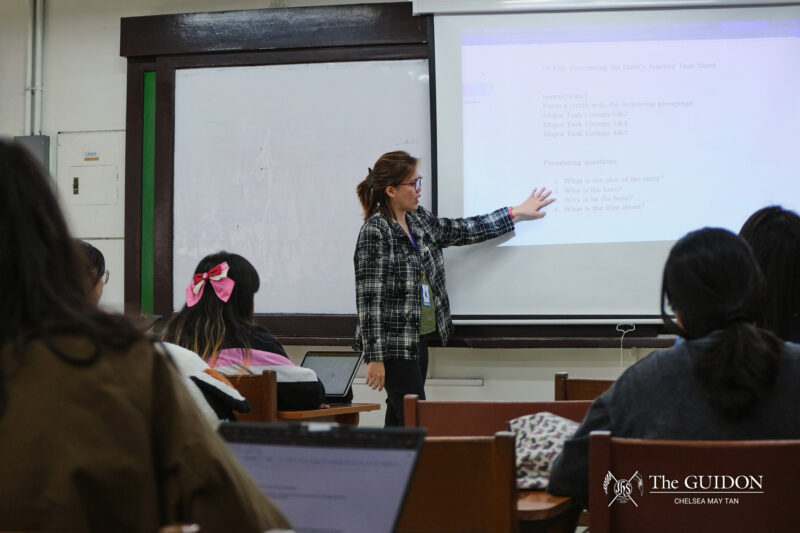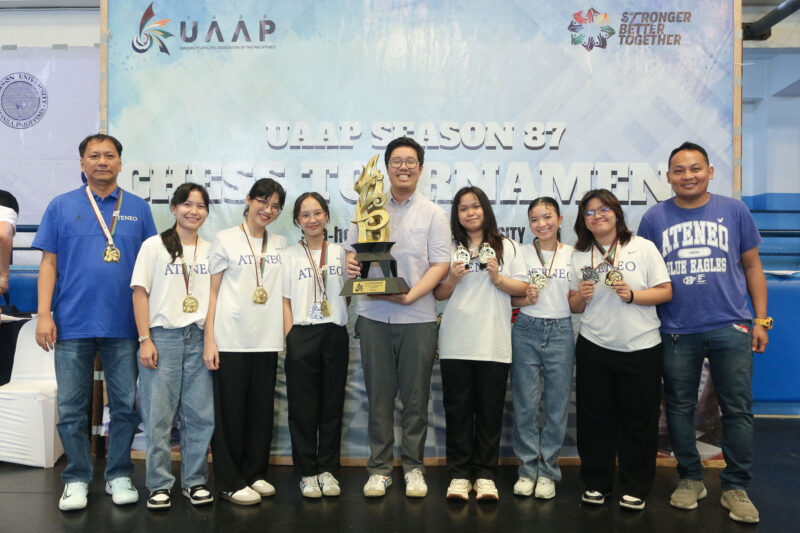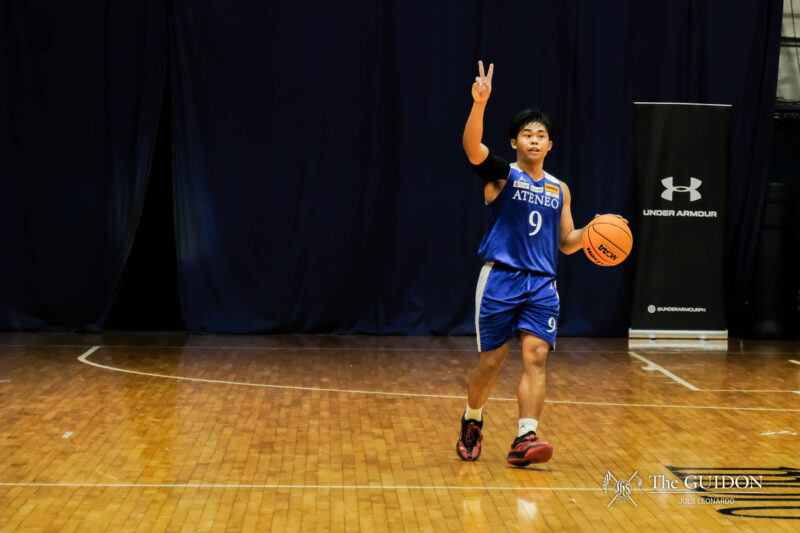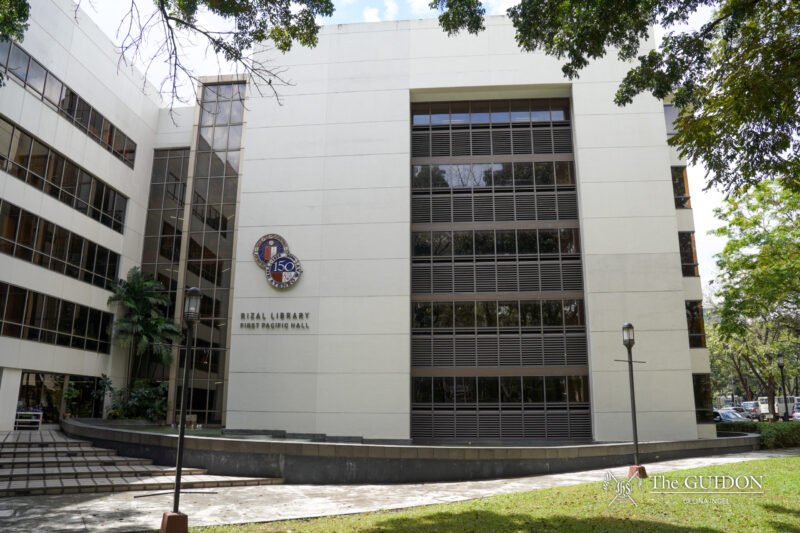When you think of a scientist, the first image that pops into your head is probably one of a man in a lab coat and glasses. Rarely do you think of a woman working on a physics equation or coding a computer program.
Although there are a great number of successful female scientists in the field, science and mathematics are still primarily perceived as a man’s world. It’s rare to find women in more technical fields like engineering, physics and computer science.
The School of Science and Engineering currently only has a total of 920 girls enrolled in its programs, out of 2120 students. In fact, there are only a handful of courses that have a greater number of women than men—biology, health sciences and environmental science, to name a few. The rest are male-dominated, with courses like physics, mathematics and computer engineering having female populations in the single digits.
The popular belief is that it is supposedly a scientific fact that men’s brains are better engineered for mathematics and science, but is that the main reason why there are only a handful of women in these fields?
Science and stereotypes
Given the stereotype that men are more likely to excel in science and mathematics than women, many people are startled when they find out that a girl belongs to a science or mathematics course.
For Denise Recomono, a management of information systems sophomore, the first reaction that people give her when they find out that she belongs to a science course is surprise. “People are honestly surprised when they find out [that I’m in a computer science course]. People think it’s a compliment when they say, ‘Oh, you don’t look nerdy enough,” she shares. She considers this a form of discrimination, as people think that one has to act or look a certain way for them to be part of the course.
Kira Lok, a sophomore physics major, has had similar experiences. “The first impression that people have of me are usually outgoing, artistic and airheaded—traits that aren’t associated with someone in my major,” she says.
Some female students even think they’re treated as less competent because of their gender. One physics major who refused to be named, for example, feels that her fellow course mates tend to be more lenient, and at times condescending, towards her. “When I do something careless, they just see it as me being a girl,” she shares.
Education itself can also play a huge role. Recomono shares that some co-educational schools have gendered curriculums. She gives the example of Saint Jude Catholic School, which has its boys and girls placed in split classes. While the boys are taking up robotics, the girls are taught skills like cooking. “Even at a young age, [girls] are conditioned to think that science isn’t for them,” Recomono says.
But according to Yasmin Chan, an instructor at the Department of Chemistry, this may just be because some schools are not well enough equipped to teach students science. “If there isn’t enough equipment for the students, then how can they get acquainted with [science]? How can they foster an interest in something that they aren’t even aware of?” asks Chan.
For most people however, the lack of women in science and mathematics fields can be attributed back to the stereotype that men are seen to be better at these courses. “There’s still this, for lack of a better term, stigma that courses like computer science and other technical [sciences] are male-dominated,” says Jessica Sugay, an instructor and program director at the Department of Information Systems and Computer Science. “Precisely because there is a notion that says men are better at these fields.”
No basis for the bias
For many professors, however, there is really no difference between male and female science majors in terms of their academic output. The only real difference is how they work. Female science majors actually tend to be more careful with their output, says Chan. They are usually more meticulous and patient, as opposed to the boys.
Ronald Cruz, an instructor at the Department of Biology, believes that girls have the right head for science and that “it’s balanced with emotion.” He clarifies that this doesn’t necessarily mean that girls are emotional, but rather that they are more in tune with their emotions.
Since scientists are usually seen as cold and detached, the fact that girls tend to address their emotions more openly gives them an edge in the scientific field, says Cruz. “It helps them to be more careful and see more angles when thinking about scientific concepts and facts.”
Based on her experiences, Sugay says that there’s really no basis for the belief that men are better at mathematics and science. She notes that although some of these students feel like they need to prove themselves because of the stereotype, her female students are actually “very brilliant.”
“[The female students] really show that they have what it takes. So I don’t think the bias or stereotype is accurate, at least from my experience. Yes, there are fewer of them, but the ones I’ve encountered are actually very good,” she explains.
“They’re just as good, and sometimes even better than, the boys,” Sugay adds with a laugh.
“Eureka moment”
In order to get more girls interested in science and mathematics, you have to start them at an early age, says Sugay. “There should be some access; it’s really about giving them exposure to that field. If it’s computer science, you have to expose them to the technology.”
You also have to cultivate their interest, she adds. “It’s really just about exposure and encouragement. From an early age, you have to believe that you’re good enough for it.”
Cruz shares the same sentiments. “It’s all a matter of breaking the stereotype that a lot of these science courses are for guys. Science is a field that should not be seen as gender-biased. As soon as that’s clear to both genders, then I think that will greatly encourage more women to get into science.”
He adds that in some fields, girls are actually expected to be more intelligent than boys. In the University of the Philippines College of Medicine, for example, girls have a higher cut-off rate than boys when it comes to their National Medical Admission Test scores. “That just goes to show that girls are actually given a lot of merit and not as much leeway as boys in terms of academic requirements,” he says.
Chan, Cruz and Sugay all agree that a way to get more girls interested in science and mathematics is to highlight the work of outstanding female scientists in their respective fields. After all, if these girls have role models that they could look up to, wouldn’t that encourage them to pursue these fields?
Intellect also shouldn’t be the only basis for what makes a good science major or scientist in general. Intelligence, after all, doesn’t have anything to do with gender. It’s also about the hard work, passion, dedication and interest that goes into the field.
“Anything’s possible with perseverance. If you’re interested enough [in science] and you’re willing to work hard for it, you don’t have to be intelligent for it. Science isn’t something that you get overnight. If you keep at it, eventually you’ll have your eureka moment,” Chan says in a mixture of English and Filipino.
For Meliza Dela Paz, a sophomore management of information systems major, intelligence isn’t even about natural skill. Intelligence is more about wanting to learn rather than the natural ability of picking up on things quickly.
“If you want to question the world, if you want to discover things, that should never be something that’s just exclusive to guys or exclusive to girls. It’s human nature to be curious. It’s really more about the hard work and passion that you’re willing to invest in it,” she says.
Lok says that, ultimately, the lack of women shouldn’t hinder other women from entering scientific fields; rather, these women should see it as a challenge. “If men are to dominate [the field], they then become the standard. Women in the field will then be exceptional.”
By the numbers
by Eugene G. Ong
Gender stereotypes manifest themselves everywhere in society, even in universities. Although many enjoy the right to choose what to study in the Ateneo, that choice is often influenced by social perceptions of what a woman or man should be.
Breakdown of courses by male/female dominance
27 male-dominated
26 female-dominated
1 evenly divided (BS Chemistry with Applied Computer Systems [BS CH-ACS])
Breakdown of the male-dominated courses
14 SOSE
6 SOSS
4 JGSOM
3 SOH
Breakdown of female-dominated courses
11 SOSS
7 SOH
5 SOSE
3 JGSOM
SOSE
Course with the greatest female to male ratio: BSMS CH (2:1; 4 women, 2 men)
Course with the smallest female to male ratio: BS APS-ACS (1:3.8; 6 women, 23 men)
School female to male ratio: 1:1.3 (919 females, 1201 males)
Largest female majority course: BS LfSci (169 out of 307)
Largest male majority course: BS MIS (161 out of 264)
Percentage of courses with more women than men: 25% (5 out of 20)
SOSS
Courses with the greatest female to male ratio: AB ChS-H (no males; 1 female); AB EU (2.8:1; 51 males, 141 females)
Course with the smallest female to male ratio: AB HI (1:1.79; 14 females, 25 males)
School female to male ratio: 1.4:1 (1369 females, 976 males)
Largest female majority course: AB Comm (300 out of 414)
Largest male majority course: AB MEC (209 out of 369)
Percentage of courses with more women than men: 64.7% (11 out of 17)
JGSOM
Course with the greatest female to male ratio: BS MAC (1.6:1; 78 women, 49 men)
Course with the smallest female to male ratio: BS ITE (1:3.1; 9 women, 28 men)
School female to male ratio: 1:1.1 (1514 females, 1600 males)
Largest female majority course: BS Comtech (299 out of 509), also largest in the Ateneo
Largest male majority course: BS Mgt (602 out of 1166), also largest in the Ateneo
Percentage of courses with more women than men: 43% (3 out of 7)
SOH
Course with the greatest female to male ratio: AB Lit (Fil) (4:1; 4 females, 1 male)
Courses with the smallest female to male ratio: AB Philo (Pre-Div) (no females); AB PH (1:2.3; 20 females, 46 males)
School female to male ratio: 1.3:1 (535 females, 406 males)
Largest female majority course: BFA ID (182 out of 271)
Largest male majority course: AB IS (191 out of 351)
Percentage of courses with more women than men: 64.7% (11 out of 17)
All data presented here are from AY 2013-2014 First Semester enrollment statistics. Data courtesy of the Office of the Registrar.






